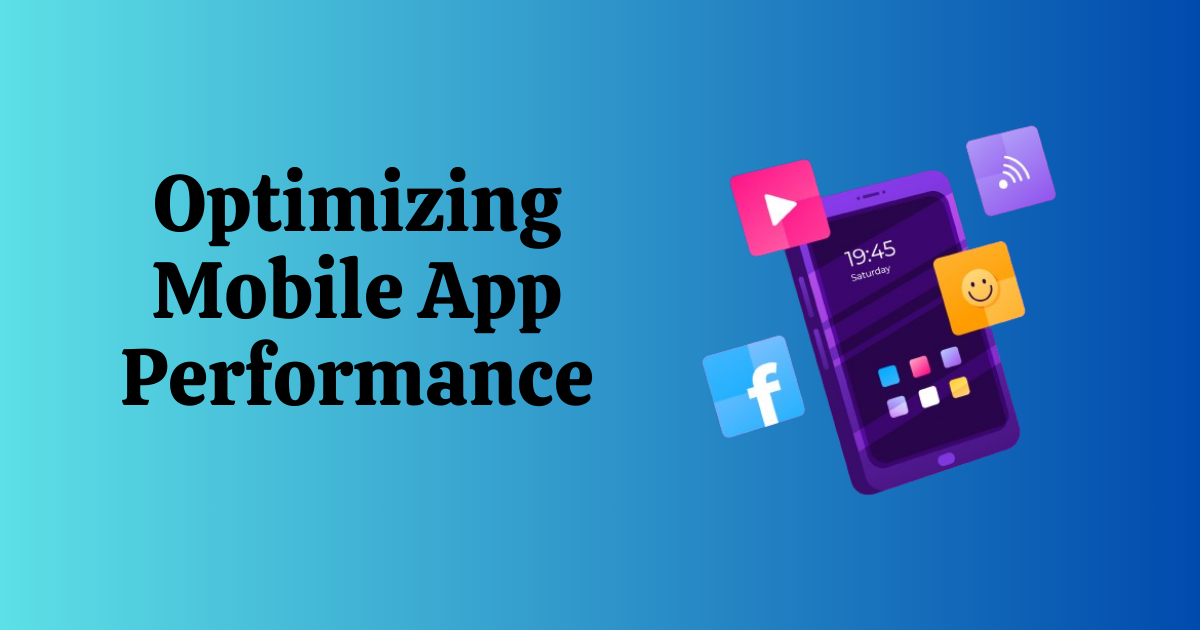Optimizing Mobile App Performance
 Wp App Developer
Wp App Developer
Mobile app performance is critical to user satisfaction and retention. An app that lags, crashes, or drains battery excessively is prone to losing users and garners negative reviews. Optimizing mobile app performance is a multifaceted challenge that involves code optimization, memory management, reducing load times, and efficient API usage. This guide delves into each of these techniques to ensure your app runs smoothly and efficiently, provides value to your users, and maintains a high standard of quality.

Code Optimization
1. Minimize Overdraw
Overdraw occurs when the same pixel is drawn multiple times within a single frame, which can significantly slow down rendering. Tools like Android’s GPU Overdraw tool and iOS’s Xcode Instruments can help identify and reduce overdraw by reorganising your view hierarchy and minimising the number of overlapping views.
2. Optimize Algorithms
Efficient algorithms are the backbone of fast-performing apps. Review your code to ensure you are using the most efficient algorithms for tasks. For example, use appropriate data structures like HashMaps for quick lookups and arrays for sequential data storage.
3. Avoid Memory Leaks
Memory leaks can slow down your app and lead to crashes. Use tools such as Android Studio Profiler and Xcode Instruments to detect and fix memory leaks. Ensure that you nullify references to objects that are no longer needed and be cautious with static references that can inadvertently hold onto objects.
4. Use Lazy Loading
Lazy loading defers the initialization of resources until they are actually needed. This can significantly improve startup time and overall performance by loading only the essential components at the beginning and delaying the loading of secondary components.
Memory Management
1. Efficient Memory Allocation
Allocate memory wisely to prevent unnecessary strain on the device’s resources. Reuse objects instead of creating new ones, and avoid using memory-intensive operations within frequently called methods.
2. Manage Bitmaps Efficiently
Bitmaps are often the largest consumers of memory in a mobile app. Use inSampleSize to reduce the size of the image, load images at the appropriate resolution for the device, and recycle bitmaps when they are no longer needed.
3. Use Memory Caches
Implementing memory caches can reduce the number of slow disk reads and network requests. Libraries like Glide and Picasso for Android, or SDWebImage for iOS, provide in-built caching mechanisms for images.
4. Optimize Background Services
Background services can consume significant amounts of memory and battery. Optimize these services by ensuring they run only when necessary and terminating them when their tasks are complete.
Reducing Load Times
1. Optimize App Startup Time
App startup time is critical for the user experience. Techniques to reduce startup time include minimising the use of heavy initializations in the main thread, preloading essential data asynchronously, and deferring non-critical tasks until after the initial screen is displayed.
2. Use Splash Screens Wisely
While splash screens do not improve load times, they can give the perception of faster loading by providing visual feedback that the app is launching. Ensure your splash screen loads quickly and transitions smoothly to the main content.
3. Efficient Data Loading
Load data incrementally rather than all at once. Implement pagination for lists and use background threads to fetch data without blocking the main UI thread. This approach not only improves performance but also enhances the user experience by making the app feel more responsive.
4. Compress Data
Compressing data reduces the amount of time it takes to download resources from the network. Use formats like gzip for compressing JSON responses and ensure images and other assets are optimized for size without compromising quality.
Efficient API Usage
1. Minimize Network Requests
Each network request adds latency and consumes battery. Batch multiple requests into a single call whenever possible, use HTTP/2 to multiplex multiple requests over a single connection, and implement effective caching strategies to reduce redundant network calls.
2. Optimize API Endpoints
Ensure your API endpoints are optimized for mobile use. This includes sending only necessary data in the response, using efficient data formats like JSON or Protobuf, and avoiding deep nested responses that require additional parsing.
3. Handle API Failures Gracefully
Network failures are inevitable. Implement robust error handling and retry mechanisms to ensure your app can gracefully recover from network issues. Provide meaningful error messages to users and offer offline functionality where possible.
4. Secure Your API
Securing your API not only protects user data but also improves performance by preventing unauthorised access and misuse. Use HTTPS for all network communications, implement token-based authentication, and validate inputs to protect against malicious requests.
Advanced Techniques
1. Use Profiler Tools
Both Android Studio and Xcode offer powerful profiling tools that can help you identify performance bottlenecks. Regularly profiling your app during development can reveal issues such as slow functions, excessive memory usage, and inefficient resource loading.
2. Implement A/B Testing
A/B testing allows you to compare different versions of your app to see which performs better. This can be particularly useful for testing different optimization strategies and finding the most effective approach.
3. Monitor Real-World Performance
Use tools like Firebase Performance Monitoring or New Relic to monitor your app’s performance in the real world. These tools can provide insights into how your app performs on different devices and under various network conditions, helping you prioritize optimization efforts.
4. Continuous Optimization
Optimizing performance is an ongoing process. Continuously monitor your app’s performance, gather user feedback, and stay updated with the latest development practices and tools. Regular updates with performance improvements can significantly enhance user satisfaction and retention.
Conclusion
Optimizing mobile app performance is crucial for delivering a seamless user experience. By focusing on code optimization, memory management, reducing load times, and efficient API usage, you can create an app that not only performs well but also adds significant value to your users. Continuous monitoring and optimization ensure that your app remains competitive and responsive to the evolving needs of your users. Investing time and effort in performance optimization ultimately leads to a more robust, reliable, and user-friendly app, setting you apart in the competitive app market.
Subscribe to my newsletter
Read articles from Wp App Developer directly inside your inbox. Subscribe to the newsletter, and don't miss out.
Written by
